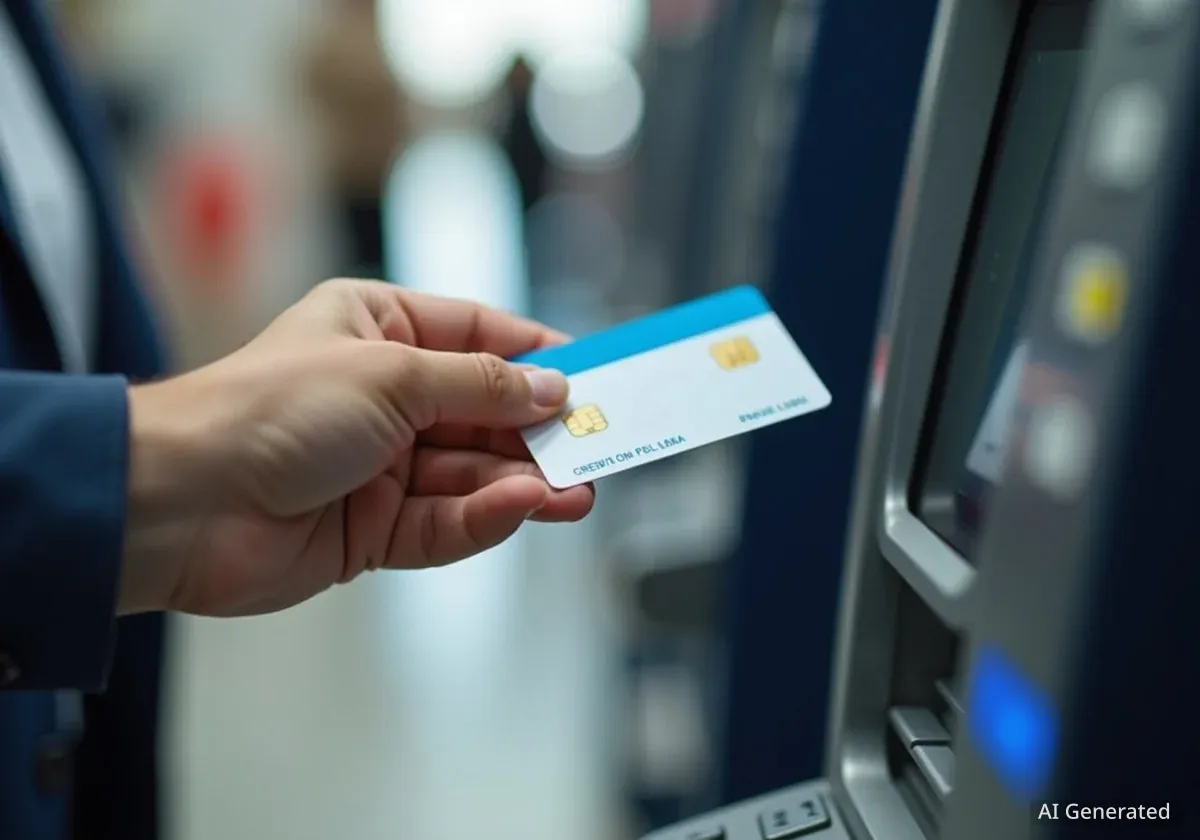The Social Security Administration (SSA) will cease issuing paper checks for benefit payments starting Tuesday, September 30, transitioning nearly all recipients to electronic payment methods. This change requires beneficiaries to receive their funds via direct deposit into a bank account or onto a Direct Express prepaid debit card.
The move is part of a broader federal initiative to modernize payment systems, enhance security, and reduce administrative costs. While the vast majority of recipients already use electronic methods, this final step will impact a small but significant portion of beneficiaries who still rely on traditional mail services for their monthly payments.
Key Takeaways
- End of Paper Checks: Starting September 30, the SSA will no longer issue paper benefit checks as a standard payment method.
- Electronic Options: Beneficiaries must choose between direct deposit to a bank account or receiving funds on a Direct Express prepaid debit card.
- Government Mandate: The transition complies with Executive Order 14247, which requires all federal disbursements to be electronic.
- Cost and Security: Electronic payments are significantly cheaper for the government to process and are 16 times less likely to be lost or stolen than paper checks.
- Assistance Available: The SSA is actively contacting the remaining paper check recipients to guide them through the enrollment process for an electronic option.
A Government-Wide Shift to Digital Payments
The decision to phase out paper checks is not unique to the Social Security Administration. It stems from a government-wide directive aimed at improving the efficiency and security of federal payments. In March, President Trump signed Executive Order 14247, setting a deadline of September 30 for all federal agencies to transition their disbursements to electronic formats.
This initiative affects approximately 70 million Americans who receive various federal benefits. The goal is to ensure that payments are delivered promptly and securely, minimizing delays and risks associated with the postal system.
Background on the Mandate
The move toward electronic payments has been a long-term goal for the U.S. Treasury Department. The primary drivers are significant cost savings and a substantial reduction in payment fraud. By eliminating the printing, handling, and mailing of physical checks, the government streamlines its operations and provides a more reliable service to recipients.
While the transition is mandatory, the SSA has acknowledged that a one-size-fits-all approach may not work for everyone. The agency is working to accommodate individuals who may face unique challenges in adopting digital payment methods.
Why the SSA is Phasing Out Paper Checks
The primary motivations behind eliminating paper checks are cost reduction and enhanced security. According to the Treasury Department, the financial and logistical benefits of electronic payments are substantial.
Significant Cost Savings
Processing and mailing a paper check costs the federal government approximately 50 cents per transaction. In contrast, an electronic funds transfer (EFT) costs less than 15 cents. When multiplied by millions of payments each month, this difference results in millions of dollars in annual savings for taxpayers.
Fact: An electronic payment is more than 70% cheaper for the government to issue compared to a traditional paper check.
Improved Security and Reliability
Beyond cost, electronic payments offer a much higher level of security. Paper checks can be lost in the mail, stolen from mailboxes, or fraudulently altered. According to federal data, paper checks are 16 times more likely to be lost or stolen compared to electronic payments.
“Less than one percent of Social Security Administration beneficiaries currently receive paper checks,” a Social Security spokesperson stated. “SSA is proactively contacting those beneficiaries to alert them about the change and the process to enroll in direct deposit or receive Direct Express cards.”
This shift dramatically reduces the risk of fraud and ensures that beneficiaries receive their funds on time without interruption.
How the Transition Will Affect Beneficiaries
The SSA reports that over 99% of its beneficiaries already receive their payments electronically, so the direct impact of this change is limited to a small fraction of recipients. However, for those individuals—often older Americans who may be less familiar with digital banking—the transition could present challenges.
The agency has stated it will not leave vulnerable individuals without access to their funds. In cases where a beneficiary has no other viable means to receive payment, the SSA has indicated it will continue to issue paper checks as a last resort. This ensures a safety net for those unable to adapt to the new system.
The two primary options available are straightforward and designed to be accessible:
- Direct Deposit: Funds are sent directly to a recipient's bank or credit union account. This is the most common and convenient method.
- Direct Express Debit Card: For those without a bank account, the SSA provides a prepaid Debit Mastercard. Funds are loaded onto the card each month, and it can be used to make purchases or withdraw cash at ATMs.
How to Set Up Electronic Payments
The Social Security Administration and the Treasury Department have established several clear pathways for beneficiaries to enroll in an electronic payment method before the September 30 deadline.
It is crucial for anyone still receiving paper checks to take action immediately to avoid any disruption in their payments. Beneficiaries can choose the method that best suits their needs.
Enrollment Options
Here are the official ways to sign up for direct deposit or the Direct Express card:
- Online via 'my Social Security': The fastest way to enroll in direct deposit is by logging into your personal “my Social Security account” on the SSA's official website. If you do not have an account, you can create one at www.ssa.gov/deposit/.
- Treasury's Go Direct Website: Both direct deposit and the Direct Express card enrollment are available through the Treasury Department’s Go Direct portal.
- By Phone: You can also enroll by calling the Treasury's enrollment center at 1-877-874-6347.
For general questions or assistance, individuals can contact the Social Security Administration's main helpline at 1-800-772-1213. Representatives are available to walk beneficiaries through the process and answer any questions about the transition.





